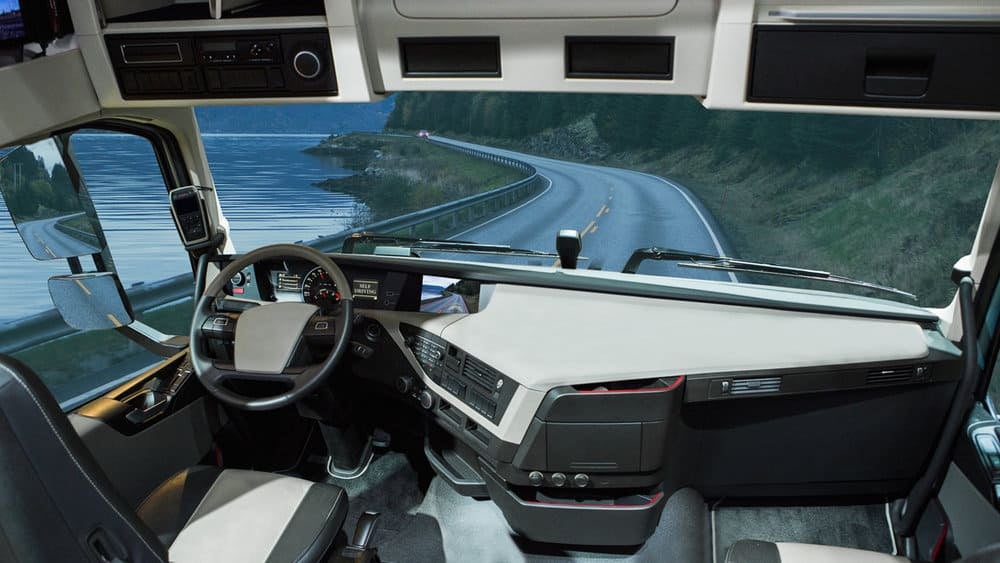
Perceptions about automation depend on which side of the argument one is on, as autonomous trucks mean different things to different stakeholders in trucking. For a consumer or an original equipment manufacturer (OEM), automation means progress on the highways, because it could potentially reduce accidents, regulate freight flow, and eventually reign in the price of consumption. On the flip side, automation fuels fear in the driving community – it would be yet another step towards replacing them for good – the weight of excessive regulations notwithstanding.
Regardless, many industry thought leaders refuse to buy into the prospect of truck drivers being displaced entirely; they contend that automation could never mature to a level where it could completely replace a human driver. Freight hauling is not just about driving on the road, but also about documentation, terminal operations, refueling, loading and off-loading cargo, and many other operations that need a human touch.
FreightWaves discussed these issues with Zeljko Jeftic, global innovation lead at the World Road Transportation Organization (IRU), to discuss the feasibility of vehicle automation and its impact on the trucking community at large.
“I believe that autonomous vehicles are not going to take away jobs, but would help in their evolution. Companies are looking for hub-to-hub operations via autonomous trucks, but that would still require a driver to jump in at the exit of a motorway, and drive it to the terminal,” said Jeftic. “You could either do it by being physically being present behind the wheel, or through remote-controlled operations. But you still would need to include drivers in the overall operations.”
The trucking industry may witness an evolution in driving jobs, with automation bringing sophistication and efficiency to the truck cabin, akin to aircraft cockpits. The industry would find some respite to the driver shortage issue, as physical driving would most likely be restricted to shorter first- and last-mile driving, with automation taking care of long hauls.
“We have a considerable forecast of the gross demand on transport, especially on the logistics side. Automation is going to put pressure, and we need to find a nice combination for both driverless and driver-supported hauling. We might have plans to have hub-to-hub operations within a decade if we have regulations set in place,” said Jeftic.
However, Jeftic was also skeptical of fully autonomous vehicles seeing the light of day within the next 10 years. “We are not going to have a vehicle that manages all-road and all-weather conditions for now, and I strongly believe we will still need skilled drivers. I hope that this element of highly automated vehicles is going to make this business a bit more interesting for the younger generation as well,” he said.
Jeftic spoke about the interest shown by OEMs towards autonomous technology and how it would turn out to be a positive reinforcement to the transportation sector. “Daimler investing €500 million into autonomous technology is a good sign; it is going to lead to increased levels of automation ultimately. This will help in making vehicles more intelligent and increase safety. But I believe that a vast majority of vehicles, even after 10 years, would still have a driver on-board. So adding autonomous functionalities is going to support drivers, helping them become more efficient,” he said.
To alleviate fears about automation within the trucking industry, Jeftic suggested a no holds barred approach. “I’m a strong believer in communication and open dialogue. We need to present a more balanced picture to transport operators and drivers, and also listen to their fears and address them,” said Jeftic. “At the IRU, we are doing some blog posts by engaging transport operators and are reaching out to our members who are actively looking forward to innovation in the industry.”
The tech-savvy millennials who will join the industry in the near future will likely have a greater acceptance of automation, because it will reduce their workload while making them more efficient.
Jeftic explained how his interactions with the younger crop of transport managers and fleet executives has shown him a glimpse of pragmatism towards innovation, and also their focus on keeping their companies relevant in the future, not just in the short-term but also a couple of decades down the road. “I tell people that to get ready for a highly automated future they should focus on digitizing their transport operations. They need to move away from using paper in planning and load-finding operations, and look to be proactively involved in discussions about automation,” he said.











